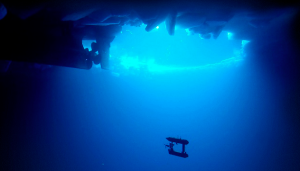 Scientists from the UK, USA and Australia are using a sonar equipped robot sub to measure Antarctic ice shelves from the underside. Will this little robot swim under the Ross ice shelf and find the Atlas Fracture zone? – that thinned area of localized stress that is the perfect place for terrorists to attack to collapse the entire France-sized ice shelf? Probably not, since the Atlas Fracture zone was cooked up primarily for my novel of the same name. But if they do find a major thin ice fracture zone in Antarctica with this thing, I’ll be psyched to read about it!
Scientists from the UK, USA and Australia are using a sonar equipped robot sub to measure Antarctic ice shelves from the underside. Will this little robot swim under the Ross ice shelf and find the Atlas Fracture zone? – that thinned area of localized stress that is the perfect place for terrorists to attack to collapse the entire France-sized ice shelf? Probably not, since the Atlas Fracture zone was cooked up primarily for my novel of the same name. But if they do find a major thin ice fracture zone in Antarctica with this thing, I’ll be psyched to read about it!
Tag Archives: Kindle
Sporty Spy Vehicle
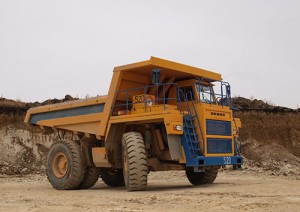 In the final scenes of my upcoming thriller, The Ceres Plague, Perry Helion has to crash a private party driving a Belaz 7555 mining dump truck (also called a “haul truck”). Not your usual James Bond-type Aston Martin spy sports car. These Belarussian-built trucks are made to work in tough industrial conditions. Though their designers probably never imagined quite what Perry asks one Belaz monster to do.
In the final scenes of my upcoming thriller, The Ceres Plague, Perry Helion has to crash a private party driving a Belaz 7555 mining dump truck (also called a “haul truck”). Not your usual James Bond-type Aston Martin spy sports car. These Belarussian-built trucks are made to work in tough industrial conditions. Though their designers probably never imagined quite what Perry asks one Belaz monster to do.
The Belaz 7555 has a payload capacity of 55 metric tons, or about 3 and a half city buses (if they’d stay in the cargo hopper). And that’s just the cargo, adding in the weight of the truck itself, and we’re tipping the scales at 95 metric tons.
Bond can keep his BMWs and Benz’s. Perry favors the downhill kinetic “oomph” of a fully-loaded Belaz making tracks toward the bad guys.
Atlas Fracture book talk, Portland Public Library
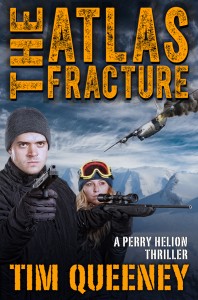 On Friday, September 13 at noon, as part of the Portland Public Library’s Local Author Series, I will read and discuss my latest adventure thriller, The Atlas Fracture. Set in Antarctica, Atlas tells the story of DARPA agent Perry Helion’s attempts to prevent terrorists from unleashing a worldwide disaster. USM biology professor Dr. David Champlin <http://www.usm.maine.edu/
On Friday, September 13 at noon, as part of the Portland Public Library’s Local Author Series, I will read and discuss my latest adventure thriller, The Atlas Fracture. Set in Antarctica, Atlas tells the story of DARPA agent Perry Helion’s attempts to prevent terrorists from unleashing a worldwide disaster. USM biology professor Dr. David Champlin <http://www.usm.maine.edu/
For those who want to pick up up the book beforehand, here is a link to The Atlas Fracture’s Amazon page.
http://www.amazon.com/
Literary guns: elaborate details or simple mention?
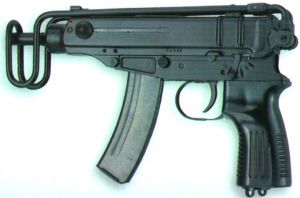 After reading an excerpt from my upcoming Perry Helion novel The Ceres Plague, Steve Konkoly, a writer friend who also pens thrillers, had a question. “What kind of guns were they?” In the excerpt, the bad guys confronted Perry with just “guns.” No further details given.
After reading an excerpt from my upcoming Perry Helion novel The Ceres Plague, Steve Konkoly, a writer friend who also pens thrillers, had a question. “What kind of guns were they?” In the excerpt, the bad guys confronted Perry with just “guns.” No further details given.
For Steve, however, this wasn’t enough. The firearms in Steve’s books almost always carry detailed descriptions: make, model, rate of fire, operational quirks, etc. For example, in a passage from his upcoming novel, Black Flagged Vektor, Steve might have just called a particular weapon a “submachine gun.” But for Steve’s type of thriller, gun specs matter — his readers want to know the details. So Steve made it a Skorpion vz 61, a 7.65 mm, 850-round-per-minute Czech-made submachine gun (video of full auto operation here). The high rate of fire of this compact gun actually becomes a plot point in the passage from Vektor.
I liked Steve’s interest in the details and thought he had the right idea. After all, Perry Helion has been around weapons and military technology for years. Why wouldn’t he know a thing or two about the guns the bad guys had trained on him? So, as a tribute to Steve, I equipped them with Skorpions. Here’s the excerpt:
“Lying astride their path was a submarine. The same sub that had skulked around during the salvage effort. Standing on its glistening hull were three men with Skorpion vz 61 submachine guns trained on the inflatable. A fourth man looked down on them from the conning tower, a semi-automatic pistol clearly visible.
“Perry released the inflatable’s throttles and raised his hands. He looked back and saw Lucy had already followed his lead.”
Coldest, driest, windiest, highest
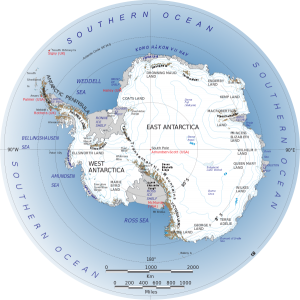 Right off the bat, The Atlas Fracture is a different thriller. A novel set in Antarctica is a rare creature. And for good reason: Antarctica is a land of extremes. The frozen continent is the coldest, driest, windiest and highest of Earth’s continents. Cold: Even in the Antarctic summer the temperature at the South Pole averages a chilly -15° F. (The action in the Atlas Fracture takes place along the Antarctic coast where the temps are a balmy 30° or 40°F in summer!). Dry: Antarctica is so dry, it is technically a desert. Due to the cold what little snow falls, never melts. Windy: Katabatic winds blowing down the high ice sheets regularly reach hurricane force. High: the continent’s massive ice sheet is an average of one mile thick and sits atop the Antarctic land mass like frosting on a cake.
Right off the bat, The Atlas Fracture is a different thriller. A novel set in Antarctica is a rare creature. And for good reason: Antarctica is a land of extremes. The frozen continent is the coldest, driest, windiest and highest of Earth’s continents. Cold: Even in the Antarctic summer the temperature at the South Pole averages a chilly -15° F. (The action in the Atlas Fracture takes place along the Antarctic coast where the temps are a balmy 30° or 40°F in summer!). Dry: Antarctica is so dry, it is technically a desert. Due to the cold what little snow falls, never melts. Windy: Katabatic winds blowing down the high ice sheets regularly reach hurricane force. High: the continent’s massive ice sheet is an average of one mile thick and sits atop the Antarctic land mass like frosting on a cake.
It is in this distant, dangerous land that DARPA agent Perry Helion must battle a gang of terrorists intent on making use of a unique feature of Antarctica’s Ross Ice Shelf. If the terrorists succeed, their diabolically ingenious plan will wreak havoc with world weather, freezing Europe and releasing much of Antarctica’s ice sheets into the world’s oceans. In the empty reaches of the frozen continent, Perry can expect no help other than scientist Ellen Kaminev, a tough and lovely young microbiologist who has been tricked into participating in the deceptive Antarctic expedition. Together, Perry and Ellen must outwit the terrorists and derail their twisted plan.
Amazon link: http://viewBook.at/B00BX7FTUU
